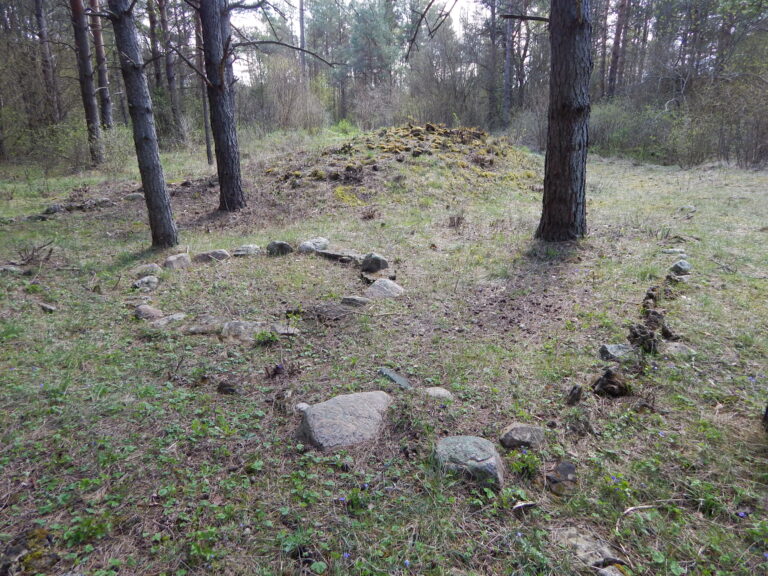
The burial site of Käku with its stone circle graves is located near the village of Käku in the parish of Kaarma in the central part of Saaremaa, 2.5 km NW from the Kaarma hillfort and the nearby church. The approximate dimensions of the burial site are 180 m (S–N) x 60–100 m (S–W). The whole area is densely covered with round stone barrows 10–20 cm in height and with a diameter of 5–7 m. A large part of the site has been destroyed or forested by now.
The stone circle graves of Käku were first excavated in the 1920s (by Aarne Michael Tallgren and Harri Moora), but larger scale archaeological excavations were conducted in 1948–1949 (by Leo Metsar). Metsar discovered nine stone circle graves and several burial patches in the area between them. The stone layers of the graves were quite thin and mostly comprised of one or two layers of limestone or granite boulders. Where the limestone walls consisted of 2–3 layers, the slabs had in places collapsed outwards. The stone circle graves at Käku were not filled with head-sized granite stones, as was otherwise characteristic of most other stone graves in Saaremaa. Instead, they were filled with soil mixed with pebbles and shingles. The distance between graves was 2–4 m.
The bone material and artefact pieces from the Käku burial site were heavily burned and fragmentary. Most of the finds could be dated to the 11th century, some to the end of the 10th or the beginning of the 12th century. Unlike the Late Iron Age stone graves without formal structure also widespread in Saaremaa, the Käku graves presumably included individual burials, although scientific analyses have yet to prove it.
The humans buried in the Käku graves lived probably 800–900 metres away in the territory of the present-day Käku village. A cultural layer dating from the 10th–12th centuries and later has been recorded in the village. Also, remains of a smithy dated to the 14th–17th centuries have been excavated near the village.


